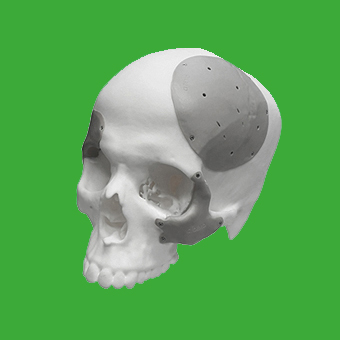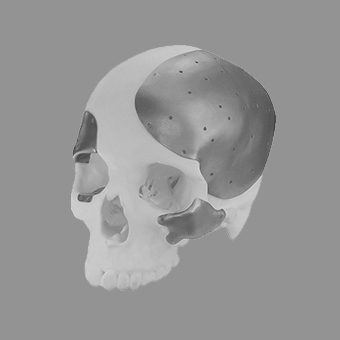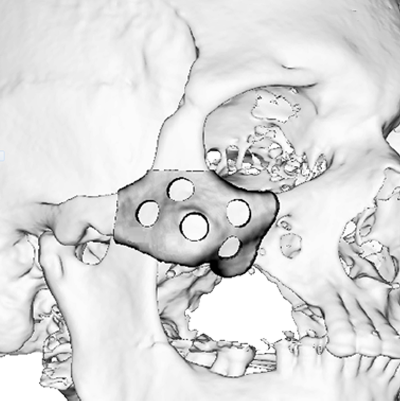
Medical-grade PEEK PSI
- Offers proven biocompatibility and biostability
- Closely matches the strength of the bone
- Is radiolucent
- Can be easily modified in surgery (e.g. if you wanted to add screws, monitoring devices, or drainage)
- Raw material carefully sourced in Europe and the UK

